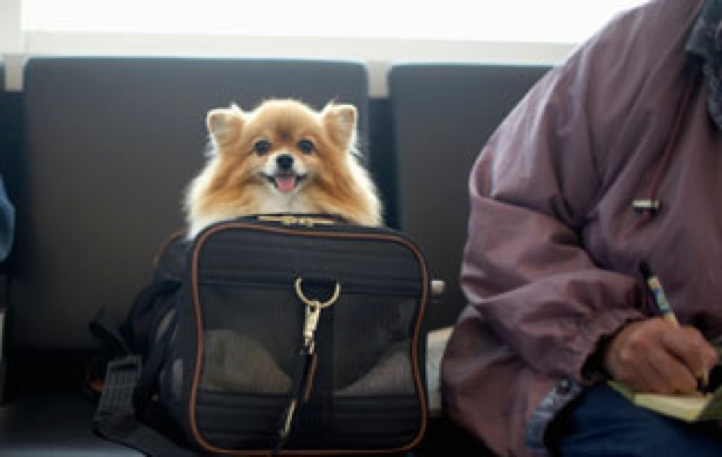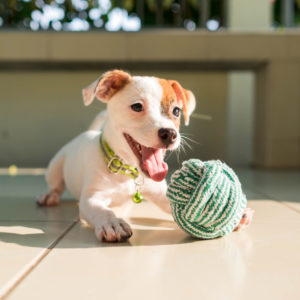Here are some travel tips for travelling with your furry companion!
- Generally, only cats and small dogs (15 lbs and under) are allowed to travel in the cabin with their owner. Check with your airline for their size and weight specifications for cabin travel. Larger pets will likely need to fly in the cargo area of the plane.
- Research your airline’s guidelines and requirements regarding size and type of pet carrier allowed on the plane. It must be small enough to fit comfortably under the seat and should have proper ventilation, be securely fastened, and have a waterproof bottom. It is also important that you don’t try to squeeze your pet in a carrier that is too small for them. They should be able to stand up and turn around comfortably. Most airlines have a detailed description on their website.
- Call your airline ahead of time to reserve space on the plane for your pet. Most airlines only allow a certain number of pets on each flight.
- Bring the appropriate documentation for your pet, especially if you are flying internationally. Do your research beforehand to determine what exact documents are needed depending on your airline and destination. Make an appointment at your vet clinic for a general pre-travel exam and the veterinarian can fill out a health certificate and all other documents you may need.
- Pack all pet essentials in your carry-on baggage, including extra food and toys or treats to keep them occupied during the flight. Also consider that sometimes luggage does get lost, so you don’t want to be stuck at your destination with no pet supplies.
- Put all of your contact information on the pet’s carrier, leash, etc.
- Check in earlier than usual. It will take extra time to go through security with a pet, and this will also give your pet some time to become more adjusted to the hustle and bustle of a busy airport.
- Once you are through security, many airports do not allow pets to be outside of their carrier. Make sure you exercise your pet well before the flight and take food and water away a couple of hours before you leave to prevent any bathroom accidents in the carrier. In an emergency, most airports have a small “pet relief station” in the secure area that is usually made of a small patch of fake grass.
- Look for ways to help calm your pet’s anxieties during travel. Line the carrier with your t-shirts so they can smell your familiar scent. Consider purchasing a pheromone product, such as Feliway for cats and Adaptil for dogs, that you can spray in the carrier to help naturally relieve their stress.
- If your pet has severe anxiety problems and is easily stressed out, consider boarding, pet-sitting or another option for travel. Not all pets are comfortable flying on a plane. You know your pet best and should have an idea whether flying will be particularly traumatic for them or not.
- Here, at VetCare, we get a lot of phone calls regarding whether sedation for travel is appropriate or safe. This should be discussed with your veterinarian and will depend on your specific pet and your situation. However, it is generally best to avoid sedatives for flying. Sedation can sometimes have a negative effect on the animal, including difficulty breathing. Unless prescribed under specific directions from a veterinarian, do not give your pet any medications for sedation.




